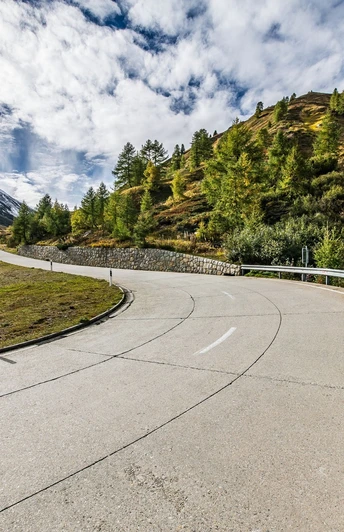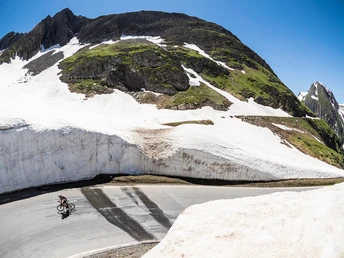- Photos & Map
How would you like to arrive?
- Description
- Good to know
- 0:40 h
- 37.15 km
- 1,338 m
- 1,132 m
- 1,142 m
- 2,478 m
- 1,336 m
- Start: Airolo station
- Destination: Ulrichen railroad station
From Airolo, the journey starts through the wild and romantic Bedretto Valley up to the Nufenen Pass. From the top of the pass, you then drive down into the Valais, to Ulrichen.
The pass road through the quiet Bedretto Valley into the Upper Valais was only opened in 1969. The well-built Nufenen is the second-highest Swiss Alpine pass after the Umbrail. Once you reach the top, you can enjoy an unforgettable panoramic view of snow-capped mountains. Not only excursionists appreciate the varied nature in the Bedretto Valley, ibex also feel at home here. With a bit of luck, the animals can be observed directly from the road.
Good to know
Pavements
Best to visit
Directions
Tour information
Nature Highlight
Stop at an Inn
Directions & Parking facilities
In Airolo there is a direct highway connection to Zurich and Italy.
There are various parking options directly in Airolo.
Airolo is very well served by public transportation. The timetable is as follows: SBB timetable
Additional information
Author
Andermatt-Urserntal Tourismus GmbH
Organization
Ferienregion
Andermatt
Author´s Tip / Recommendation of the author
The Obergoms is a uniquely beautiful high valley with picturesque villages in an intact natural and cultural landscape.
Safety guidelines










